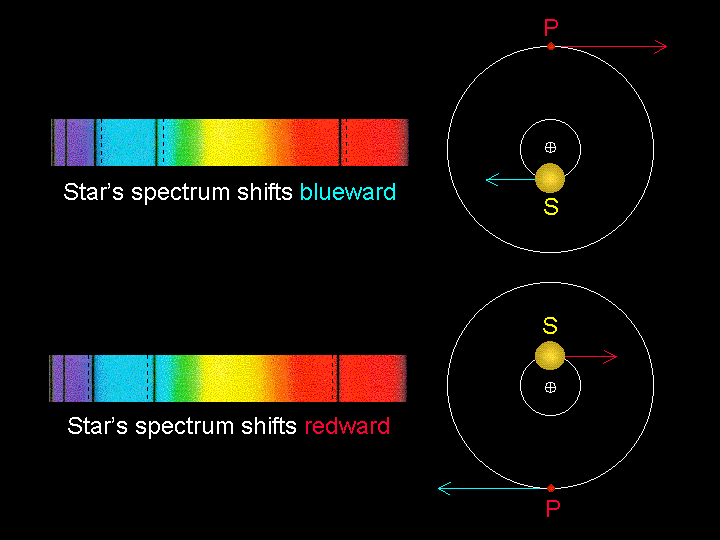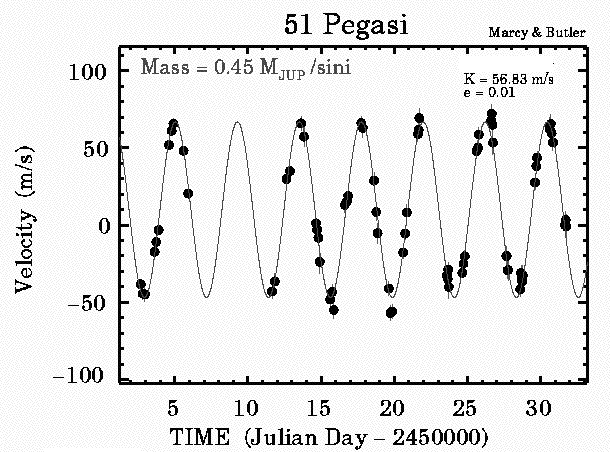Want it on paper instead? Download the .pdf document! It's printer-friendly and paper fits easily inside your lab notebook...which you may want come quiz day...
Make sure that you are recording everything you do in your lab notebook. When you take your quiz in class next week, you will be allowed to use your notebook, a calculator, and clicker, but no additional resources.
IntroductionSince the first extra-solar planet was discovered in 1989, there have been over 1000 additional planets confirmed to be orbiting other suns. In the fall of 1995, astronomers were excited by the possibility of a planet orbiting a star in the constellation Pegasus. Why such a fuss over this particular star (called 51 Pegasi), located 50 light years from the Earth? Because it is a star almost identical to our own sun! Just slightly more massive and a bit cooler than the Sun, it seemed like a good place to look for planets−given that we know for a fact that at least one sun-like star (our own!) has an extensive planetary system, with at least one planet (our own!) capable of supporting life! Objectives
ProcedureUntil very recently, the most common method of exoplanet detection involves radial velocity measurements. As we know, the light from an object moving towards us will be shifted toward shorter wavelengths (blue-shifted), and motion away results in light that is red-shifted towards longer wavelengths. This Doppler shift can be used to calculate the speed with which an object is hurtling at us through space.
Well, how does this help us "see" a very tiny planet orbiting a very distant star? Even if the planet is too small for us to image directly, its presence can be detected by its gravitational pull on the star it orbits. Technically, the star and planet are both orbiting their common center of mass. Because the star is so much larger, the planet moves very noticeably, and the star remains virtually stationary. But it's not quite perfectly still: the star will wobble slightly with each orbit of the planet, first one way, then the other. Since the planet's orbit is periodic (Kepler! Number! Three!), so is the wobble of the parent star. What that means is that the star's radial velocity will change slightly, increasing and decreasing with the same periodicity as the planet's orbit. With each orbit of the planet, you can watch any particular spectral line you like (maybe the Hα?) shift slightly to the red, then to the blue. Because you know where the line ought to be (656nm), you can determine the radial velocity, and the bigger the Doppler shift, the more massive the planet is. The period of the planet in orbit can be measured by watching the pattern repeat. And once you know there's a planet out there, and what its orbit looks like, it's not that hard to calculate its mass (Newtonian Gravity and Kepler #3!). Data & AnalysisThe table below is some of the actual Marcy & Butler data collected in October of 1995 at the Lick Observatory in California.
|
Questions
|

 Your graph will not be identical to this one! However, it should give you an idea of what to expect as you plot your own data.
Your graph will not be identical to this one! However, it should give you an idea of what to expect as you plot your own data.


